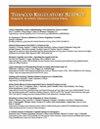Application of operation room optimization process with multidisciplinary collaborative management in hysteromyoma surgery
4区 医学
引用次数: 0
Abstract
Objective: To explore the application of operation room optimization process with multidisciplinary collaborative management in hysteromyoma surgery. Methods: 500 patients who underwent hysteromyoma surgery from March to December 2018 were selected as the control group. 500 patients who underwent hysteromyoma surgery using operation room optimization process with multidisciplinary collaborative management from March to December 2019 were selected as the observation group. The scores of self-care ability (ESCA), psychological status (HAMA, HAMD score), time of postoperative early ambulation activity, comfort of ambulation activity, postoperative hospital stay and total hospital stay, postoperative complications, quality of life score (SF-36), satisfaction with care were compared between the two groups. Results: There was no significant difference in the scores of ESCA, HAMA and HAMD between the two groups before operation (P>0.05). On the 7th day after operation, the score of ESCA of tne two groups was increased (P <0.05), and that of the observation group was higher than that of the control group (P<0.05). The scores of HAMA and HAMD of the two groups were lower than that before operation (P<0.05) and that of the observation group was lower than that of the control group (P <0.05). The earliest time of postoperative ambulation activity of the observation group was earlier than that of the control group (P<0.05). Ambulation activity comfort was superior to the control group (P<0.05). The postoperative hospital stay and total hospital stay of patients in the observation group were shorter than that in the control group (P <0.05). There was no significant difference in preoperative SF-36 scores between the two groups (P>0.05). There was significant difference in SF-36 scores between the two groups after operation and after follow up for 3 months (P<0.05). The occurrence of adverse events in the observation group was lower than that in the control group (P<0.05). The satisfaction of nursing in the observation group was higher than that in the control group (P<0.05). Conclusion: The application of multidisciplinary collaborative management in hysteromyoma surgery can optimize the operation process, alleviate the patient's operation anxiety, promote the patient's postoperative rehabilitation, improve the patient's quality of lite and improve tne patients satisfaction, and therefore, it is worth popularizing.多学科协同管理的手术室优化流程在子宫肌瘤手术中的应用
目的:探讨多学科协同管理的手术室优化流程在子宫肌瘤手术中的应用。方法:选择2018年3月~ 12月行子宫肌瘤手术的患者500例作为对照组。选择2019年3月至12月采用手术室优化流程多学科协同管理的子宫肌瘤手术患者500例作为观察组。比较两组患者自我护理能力(ESCA)、心理状态(HAMA、HAMD)、术后早期下床活动时间、下床活动舒适度、术后住院时间及总住院时间、术后并发症、生活质量评分(SF-36)、护理满意度。结果:两组患者术前ESCA、HAMA、HAMD评分比较,差异均无统计学意义(P < 0.05)。术后第7天,两组患者ESCA评分均升高(P < 0.05)。两组患者术后及随访3个月时SF-36评分比较,差异均有统计学意义(P<0.05)。观察组不良事件发生率低于对照组(P<0.05)。观察组患者护理满意度高于对照组(P<0.05)。结论:多学科协同管理在子宫肌瘤手术中的应用,可优化手术流程,减轻患者手术焦虑,促进患者术后康复,提高患者生活质量,提高患者满意度,值得推广。
本文章由计算机程序翻译,如有差异,请以英文原文为准。
求助全文
约1分钟内获得全文
求助全文

 求助内容:
求助内容: 应助结果提醒方式:
应助结果提醒方式:


